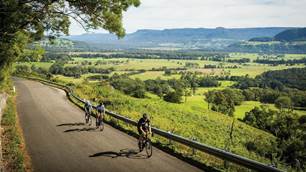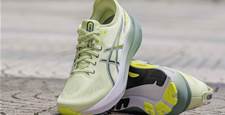Our Urban Cyclist explains why clothing issues should not prevent you from riding to work
Words: @urbanphaedrus
"But I hate changing clothes!" That statement always tickles my fancy from people considering using a bike to commute.
Do you put on special clothes to drive a car? If you were driving in a race you might wear a fire suit, and a helmet, but if you were dropping kids off at school you would wear normal clothes. So why the desire for special clothing when riding a bicycle?
I believe it’s because cycling in Australia is largely viewed as a sport rather than a valid form of transport. I too wear Lycra when training or racing, but when using a bicycle as transport I wear what is suitable for my destination. Some consideration may go into what will make the journey more comfortable - but I don’t see why this has to limit your sense of style. For sure there are very stylish “cycling specific” urban or city clothes you can consider but you really don’t have to go to those lengths to look good and be comfortable on bike.

Surprisingly, suits are comfortable to ride in. Being made of wool, or a wool blend, they are protective from the elements while still being breathable. If it is warm they can be left open to fly behind in a rakish fashion then, as it gets chillier, they can be buttoned up with a scarf and gloves. For a price you can find ‘cycling’ jackets that are pleated in the back like an English hunting jacket and while I have found them to be a great addition to my wardrobe, they are really not necessary.
“But I’ll get sweaty!” is another refrain. If that’s an issue slow down, take it easy and enjoy the ride. Or if you feel the need for speed, maybe think about an e-Bike. “But it is so humid I get sweaty even when I walk!” So what do you do now? Maybe you are lucky enough to stay in an air-conditioned bubble all day, but most of us don’t and so we already know how to manage the environment.
Breathable fabrics make a huge difference and fine Merino wool undervests (a base layer for my roadie friends) will wick sweat away. And if all else fails, you can wipe the sweat down with a cool paper towel when you arrive. Sometimes, as a last resort, I stand under an air-conditioning vent to both cool down and dry off.
“I can’t ride in the rain!” you may cry. Rain can be daunting – although with some thought it is possible to cope with comfortably. Fenders or mud guards are a must. Even if you plan to never ride in the rain you will ride on wet roads and that racoon strip down your back, not to mention wet legs (and clothing), is far from pleasant.
You will have to invest in quality wet weather clothing; I have a large trench coat style raincoat as well cycling styled rain jackets. And if the rain is heavy, rain paints are a must and Wellingtons are highly recommended, along with a hood or a helmet cover, to stop the rain going down the inside of your jacket. This all sounds too much just to ride in the rain? You will be surprised at how often you will use these clothes for other activities once you have them.
In the end it is all about attitude. Just like any other form of transport, sometimes things go wrong. Maybe it is hotter than you expected and you arrive sweaty. Or you leave without your wet weather gear and a storm catches you half way home. How do you cope with such events? I have ridden home in the pouring rain in a suit. I tried to find shelter but was soon soaked through, so I decided in the end to just keep going. A warm shower and hot food was waiting for me at home but I could have just as easily left my bike at work and caught a cab.
What are the barriers stopping you from doing something different? And how can they be overcome? Riding a bike for transport means you’re a participant in life rather than a spectator and, as such, sometimes it won’t work out according to plan. But that’s OK - as you will learn and adapt. So get on your bike and just wear what makes you feel comfortable. More importantly, ride and smile.
Related Articles

Gear: adidas Summer Fashion

Opinion: What chance does golf have?













